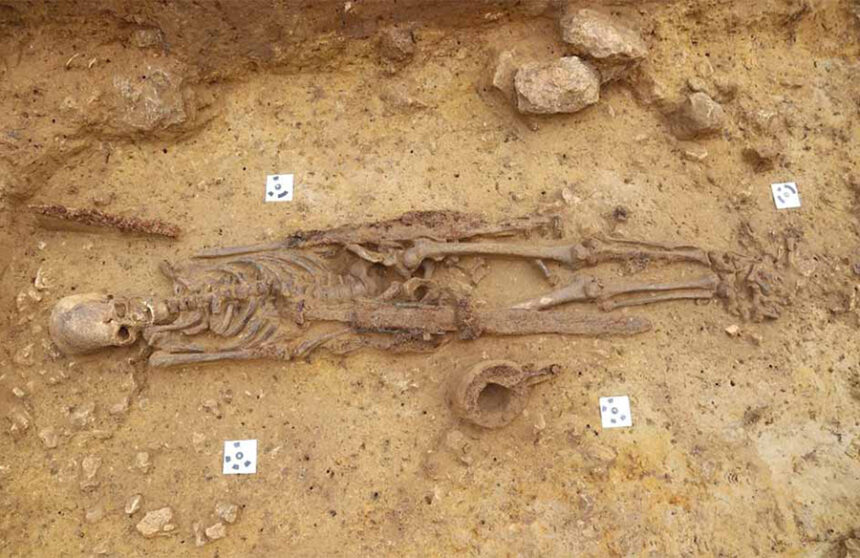In a remarkable archaeological find that has captivated historians and archaeologists alike, an untouched grave dating back to the Merovingian period has been unearthed in Germany. Amidst a burial ground previously ravaged by looters centuries ago, this pristine grave remained undisturbed for over 1,300 years.
The Astonishing Discovery
Archaeologists from the Kaiserpfalz Research Center, conducting excavations at the site since 2015, made the startling discovery. Christoph Bassler, the excavation manager, recounted the moment of revelation: “We first spotted the edge of a shield boss… It wasn’t immediately clear which grave it belonged to. But, as we dug further, the realization dawned that we had stumbled upon a grave that, for some reason, had been overlooked by ancient grave robbers.”
A Warrior ‘Armed to the Teeth’
The occupant of the grave, dubbed the “warrior from grave 447,” held a prominent status in his era. Alongside him lay an impressive array of weaponry, including a splendid double-edged sword measuring nearly 93 cm (3 feet) in length. Despite the passage of centuries, the sword’s blade retains remarkable flexibility, indicative of exceptional preservation.
Insights into Early Medieval Warfare
The grave’s contents provide valuable insights into the martial culture of the early Middle Ages. While equipped with a diverse arsenal, the warrior was not a professional soldier. In a time when standing armies were nonexistent, free men were called upon to defend their communities when the need arose.
The Historical Context: The Franks in Europe
The Franks, a prominent Germanic tribe, played a pivotal role in shaping European history following the collapse of the Roman Empire. Under leaders like King Clovis I, the Franks unified various tribes, expanded their territories, and embraced Christianity, ushering in a new era of cultural fusion in the region.
Unraveling the Mysteries
While the grave’s artifacts undergo restoration, scholars anticipate further analysis to unveil hidden details obscured by rust. Silver inlays concealed beneath the oxidation layers hold promise for revealing the artistic craftsmanship of the time. Additionally, studies are underway to determine the cause of the warrior’s death, shedding light on his ultimate fate.
The discovery of this untouched grave offers a tantalizing glimpse into the life and death of a Frankish warrior from over a millennium ago, enriching our understanding of early medieval Europe’s martial traditions.



Leave a Reply